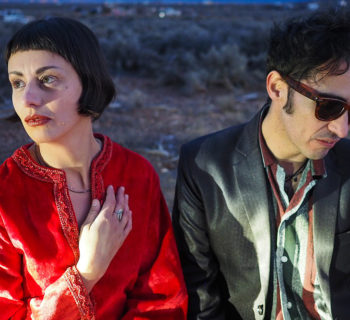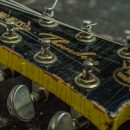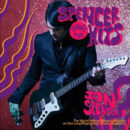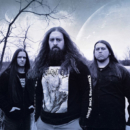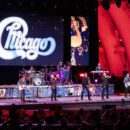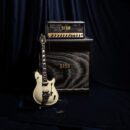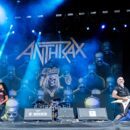DJ Flip explains the new features of the DJ systems Pioneer Electronics presented at Winter NAMM 2015.
Music Connection: Hey guys! Music Connection here winter at NAMM 2015 with DJ Flip at the Pioneer booth. So we’re just going to talk a little bit and do some demos about what they’ve got with them. To start off with, what did you guys bring out today?
DJ Flip: One of the new units is the XDJ-1000 where they took a lot of the familiar hardwares from the previous CDJ and transferred to a 7-inch touch screen where’s also they took out the CD drive hence it’s not called a CDJ anymore—it’s an XDJ-1000 where not only does the drive removed actually makes the unit a lot lighter to carry now so because DJs nowadays are gearing away towards using CDs. Very few left in this industry that are still using the CDs and now a lot of them have either gone software and or a thumb drive where the unit XDJ also allows you to play your exported playlists from Pioneer’s Record Box, a music management software. That way all your cue points and loop points, wave forms that have been saved to Record Box will appear once you pull them up in the XDJ unit. Also the advanced search function has been improved to now a full keyboard just like on a smart phone so it’s easier to type your song searches in there as well.
Another unit that we have here at the show now is the all-in-one control unit called the XDJ RX, which is a two-channel all-in-one unit designed for the Record Box user, so it runs USB in your thumb drives where again you’ll pull your exported playlist from Record Box and it’s a unit where you can actually record your set as well into the thumb drive as well and then of course their new headphones. The HRM-7 which is the new Pioneer Studio headphones as well that we’re displaying.
MC: How accessible is it for anyone trying to get into the market? Is it something they can get straight off the Internet? Is there a specific source they can go to get it?
Flip: Aside from Pioneer’s website where you can get a whole overview of the gear and all the specs, there are retailers, online retailers that you can look into that carry the gear, that carry the Pioneer line, so they find more about that through the dealers as well.
MC: Can you tell me a little bit more about Record Box? Is it kinda like cloud-based? I know a lot of people are tending to go a little more cloud based now.
Flip: Record Box is a music management software. It’s kind of like iTunes for DJs, where DJs can create playlists and set all their cue points, their loop points, wave file, BPM, album art, title, track, the artist, and once it’s exported to your jump drive—when you put your thumb drive into one of the units like a CDJ and an XDJ—all those cue points and all that information you saved from Record Box roll up here on the unit, so you don’t have to do maculate, set cue points. I mean unless you want to change them, but it’s designed for people to customize their music the way they want to when they’re performing; the way they want it set up.
MC: They definitely live up to their name Pioneer. We’re looking around at all the archival sort of stuff it’s like, “Wow they were the first ‘this.’ They were the first ‘that.’”
Flip: Pioneer revolutionized a whole lot. Even dating back to the CDJ 700 when they brought back the traditional look of a DJ set-up: Where it was almost like turn table-based but without using turn tables. They were using the CDs, but a lot of DJs still attach themselves to that traditional look, myself as well, and then, of course, the groundbreaking CDJ Arrow where they developed full-on, full-blown final emulations turn table, digital turntable for CDs, and the whole evolution progressed from there.
MC: For my last question so you can get back to what you were doing…which one of these do you personally as a DJ—which one’s your favorite to use?
Flip: Personally I use the CDJ-2000 Nexus with the DJM-900 Nexus. One: for the simple fact that it has all the tools there that I personally use. The precision. I mean all Pioneer gear is pretty much precision as far as performance goes, but the CDJ-2000 and the 900 Nexus have every feature that I need that I like to use in my performances. Whether it’s hot cues and then the effects and the filters on the DJM-900. The way it’s all set up on the mixer—that’s my personal preference how I like using. And also the DDJSX is a controller that I use as well. That’s something I like to carry for smaller crowds or smaller venues, or I just don’t want to take time to create a whole set up.
But visually performing-wise, it’s still a beautiful piece to display when you’re performing as well. So that’s my personal preference. Everyone’s different. Some guys just like using the controllers, the all-in-one’s. Some guys like using the same size unit as say a CDJ set up but in a controlled format like in the DDJSZ, which is basically like a CDJ-2000 and a DJM-900 fused into one unit where you still have the same size platters as a CDJ. You still have the same size and feel that you would like as you were performing on the CDJ unit, but it’s one piece that you can just carry around. And then, you know, everybody has their own preference.

